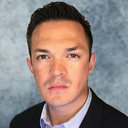Orthopaedic Considerations for the Adult With Osteogenesis Imperfecta.
Atslēgvārdi
Abstrakts
Osteogenesis imperfecta is a heritable group of collagen-related disorders that affects up to 50,000 people in the United States. Although the disease is most symptomatic in childhood, adults with osteogenesis imperfecta also are affected by the sequelae of the disease. Orthopaedic manifestations include posttraumatic and accelerated degenerative joint disease, kyphoscoliosis, and spondylolisthesis. Other manifestations of abnormal collagen include brittle dentition, hearing loss, cardiac valve abnormalities, and basilar invagination. In general, nonsurgical treatment is preferred for management of acute fractures. High rates of malunion, nonunion, and subsequent deformity have been reported with both closed and open treatment. When surgery is necessary, surgeons should opt for load-sharing intramedullary devices that span the entire length of the bone; locking plates and excessively rigid fixation generally should be avoided. Arthroplasty may be considered for active patients, but the procedure frequently is associated with complications in this patient population. Underlying deformities, such as malunion, bowing, rotational malalignment, coxa vara, and acetabular protrusio, pose specific surgical challenges and underscore the importance of preoperative planning.


